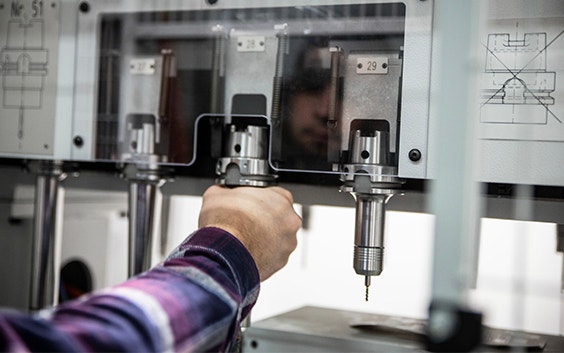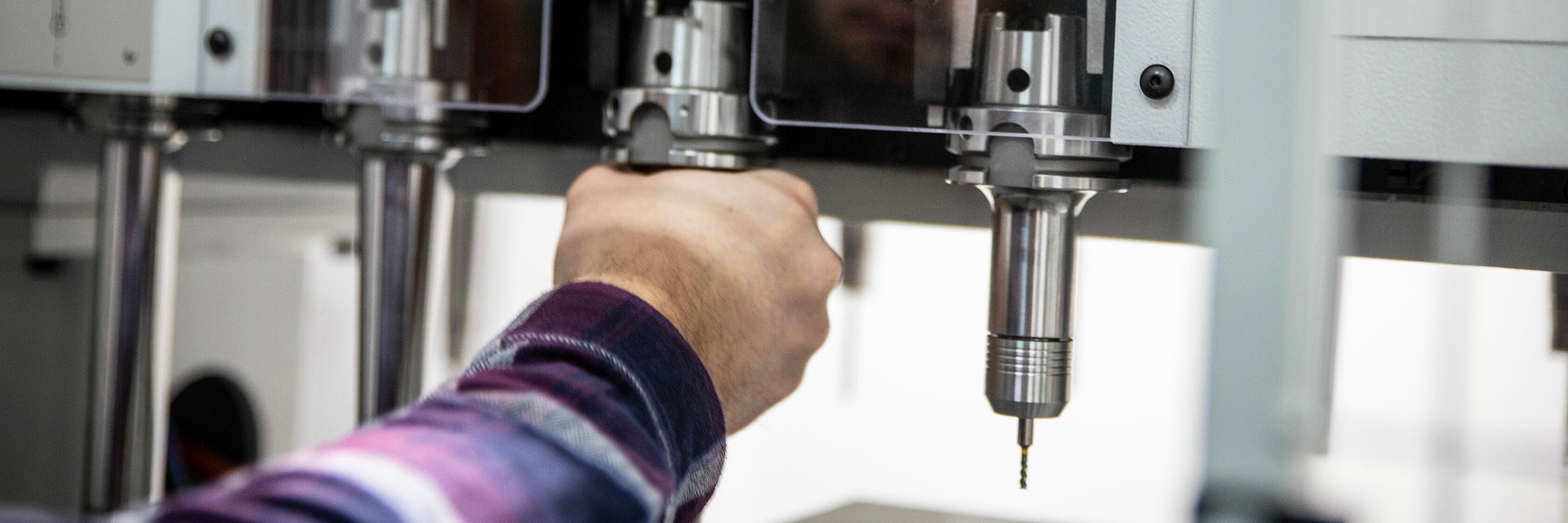
INTERVIEW
Metal 3D printing vs CNC machining? There’s no competition when ‘and’ can be better than ‘or’
Reduced waste, production efficiency and functional gain driven by greater design freedom and flexibility. An increasingly familiar summary of the key benefits afforded by metal 3D printing. Meanwhile, high-volume repeatability, precision surface finishing, particularly in relation to tight tolerances, remain characteristics more closely associated with CNC machining. But what if there was no competition? No ‘either/or’?
We caught up with Ingo Uckelmann, Technical Manager of Metal 3D Printing at Materialise, about this exact scenario, to find out why, in many cases, these two manufacturing techniques can (and should) be complementary rather than opposed.
Isn’t the whole point of considering 3DP for metal parts that it offers more advantages than other techniques, including CNC machining?
No, it isn’t. And that’s where a lot of confusion sits. Metal 3D printing (M3DP) like any other manufacturing technique or process, has its own specific advantages and drawbacks that need to be weighed up in relation to the task at hand. The ‘point’ of it is that it offers manufacturers options – another way of doing things.


In relation to CNC machining, some key differences present opportunity. For example, as a subtractive process, CNC machining will result in more raw material waste than using M3DP. When, as is often the case with metal, that raw material is expensive to begin with, Titanium for instance, the cost benefit alone can be significant.
As CNC machining is, fundamentally, about using a particular cutting tool to form the desired part, this also means that the tool has to exist – and if it doesn’t then another process has to start to create that specific tool, for example to create an undercut. It also means that the tools have to be able to access all surfaces with the part held securely in place, which, even with 5-axis set-ups, can make some applications impossible. The cylindrical nature of most cutting tools means that ‘true corners’ are problematic – internal vertical corners will always have a curve unless an undercut is used.
As an additive process, however, 3DP requires no part-specific tools other than supports, so edges present no problem. The greater range of geometries possible, including internal channels, can help reduce weight, add functionality, and more. In essence, creating physical tools are replaced by designing in software.
But these benefits don’t mean that 3DP is always the best solution?
Exactly right. CNC machining offers distinct benefits too. Pinpoint precision – just a few micrometers on every axis – is one, which in turn has implications for achieving a superior surface finish without the need for supplementary processing. When it comes to tolerances, CNC machining will also typically outperform 3DP as a ‘heat and reform’ process isn’t required. Additionally, CNC machining is great for heavy-duty (literally heavy materials) end-use parts.
Where there is no design/functional benefit from using 3DP – internal channels, complex geometry, reduced weight, consolidated components etc. – the subtractive speed of CNC machining will generally make it a more attractive and cost-effective option in terms of ‘like-for-like’ low-volume part production.
The problem is that many manufacturers believe these pros and cons have to result in an either/or decision, when in fact the strengths of each – if harnessed the right way – can, together, present far greater opportunity.
Can you give any examples of how manufacturers might benefit from these complementary strengths?
I mentioned before about tolerances. For many automotive, aerospace and other high-accuracy product applications, critical metal parts can demand tolerances in excess of those delivered using 3DP alone. Yet, the design flexibility (which often helps to reduce part weight/enhance ergonomics) offered by 3DP, is the very thing which appeals most in these scenarios. Using CNC machining, on 3D-printed parts delivers the best of both worlds, in some cases bringing tolerances down as low as ±0.005 mm.
Also, thinking of precise surface finish where tight clearances are required – especially where absolute functional fit with other parts is key to performance – critical dimensions can be 3D printed oversized, before using CNC machining, for example 5 axis milling, to achieve the precision specification demanded.
There are also material advantages, literally. Previously, benefiting from mechanical performance characteristics – strength, corrosion-resistance, thermal properties etc. - of Titanium, Aluminum, Inconel and Stainless Steel ruled out 3DP in many cases. But with these materials, and many more alloys/super alloys, now available with 3DP techniques and ‘finishable’ to pin-point accuracy using CNC machining, product development engineers have far greater flexibility around materials they are already highly familiar with.
It’s also important to remember that, in the same way design optimization with 3DP unlocks specific form or function benefits, 3DP files for metal parts can also be optimized for CNC machining to help manufacturers achieve the spec they want for less cost. Rotating, repositioning, process complexity and custom fixtures common, but costly, when creating intricate metal parts with CNC, can be minimized or negated completely by using 3D printing to ‘take the initial structural strain’, leaving simple – yet spec-critical – final processing to CNC machines, for instance to add fine threads.
Additionally, on top of design and performance benefits, combining the powerful advantages of 3DP and CNC to produce metal parts is often a speedier and, therefore, more cost-effective process than developing a specific injection molding solution. Pair this with the design iteration benefits afforded by these digital manufacturing processes, and it’s clear to see why this ‘power couple’ of metal part production, can (and should) catch manufacturers’ attention.
As both manufacturing methods are digital, does that mean they can be more easily set up as a single process?
It does. And in fact, the advantages that this offers are some of the key reasons that we have added CNC machining to our own metal 3DP offering.


Knowing that a part is going to be finished using CNC machining allows 3D-printed parts to be designed to optimize this potential, with data set-up enabling a neat dovetail with CNC requirements to streamline production and product finishing. The ‘one workflow’ solution we now offer will enable customers to benefit from all the advantages of adding in complex designs for specific forms and functions with 3D printing and the precision from CNC. Plus, at the same time it eliminates any unnecessary lead time and administrative delays caused by having two completely stand-alone processes: the turnaround times of printed and milled parts can be as low as 12 business days.
For us, this combined offering is also an opportunity to further develop 3DP software and technology to keep pushing metal 3DP forward. It really is an exciting time to be involved in this field and we look forward to helping customers seize the opportunity at hand.
We’re here to help you with your manufacturing challenges. If you need help in designing your product, we can guide you.
Share on:
You might also like
Never miss a story like this. Get curated content delivered straight to your inbox.
